Launching The Professionalisation of Window Display in Britain, 1919-1939
This week, I was delighted to attend a book launch for Dr Kerry Meakin’s new book, The Professionalisation of Window Display in Britain, 1919-1939, part of Bloomsbury’s Cultural Histories of Design book series which I founded and co-edit with Prof Kjetil Fallan (University of Oslo). The launch was hosted by Dr Vanessa Vanden Berghe at Chelsea College of Arts, University of the Arts London, at its elegant site next to Tate Britain by the Thames on Millbank. During the launch, Dr Meakin made clear that her approach to researching the history of window display arose from her own work over several decades as a window display professional. She read from her book, accompanied by a slide show of fascinating images from her book of shop window installations and designs. A panel discussion followed in which Kerry answered questions from Professor Penny Sparke, Dr Vanden Berghe and Dr Harriet Atkinson, before the questions were opened to the floor. The evening closed with a convivial drink, where I was delighted to distribute flyers for the Cultural Histories of Design series, and catch up with our super publisher, Suzie Nash and other guests as well as, chiefly, celebrating Kerry’s book.


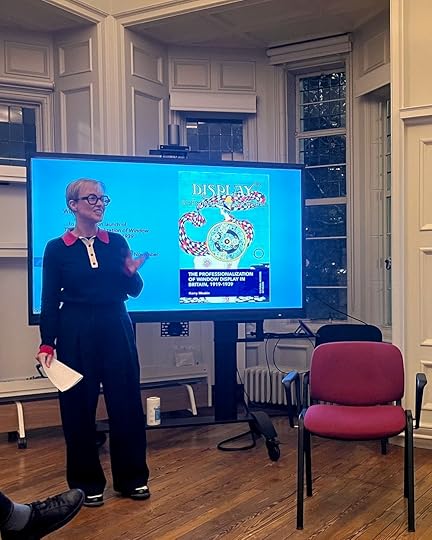
Although I felt that having worked closely with the text as a co-series editor I should not have any questions, in fact I had several. As well as being interested in Dr Meakin’s book as series co-editor, I am also interested in her topic as it relates to my own work on the professionalization of interior design. So, I was interested in the relationship between window design and retail design in the stores, and whether the latter was led by the former or vice versa, and whether the latter was undertaken by interior designers and the wider relationship between the professionalisation of interior design and window display. Kerry answered that the window displays she studied were reflected in displays throughout the stores, and that interior designers lack the skills possessed by window display designers. I also asked about whether Dr Meakin considered moving from the archival research that underpinned this book to oral history for a future project, in order to capture the rich professional expertise that she and several of her audience members shared during the discussion. Kerry agreed that an oral history of windows display is urgently needed to capture the history of practice in the 1980s.

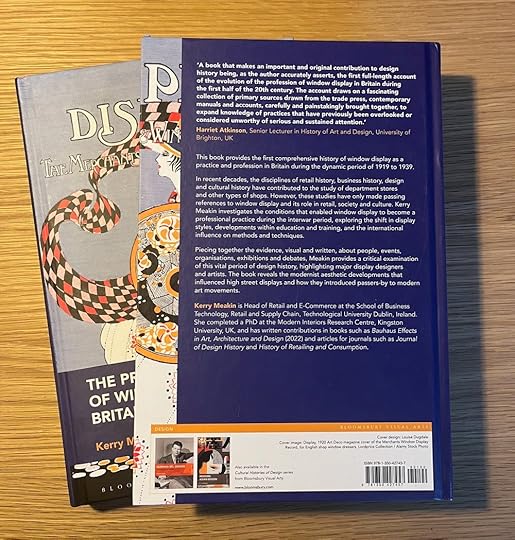
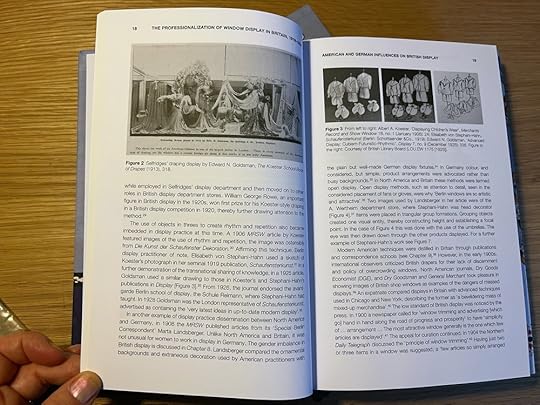
Reflecting on Cultural Histories of Design
I conceived the idea for the book series Cultural Histories of Design in 2013 when Prof Fallan and I developed it as a home for design histories which extend their reach into and across the humanities. The intention for the series is that it should seek out, foster and publish rigorous original research on the role and significance of design in society and culture, past and present from a vantage point at the heart of the humanities. It has been successful in this, producing a collection of books which explore design as the most significant manifestation of modern and contemporary culture. Cultural Histories of Design is distinguished by an interdisciplinary approach to design, including, but not limited to, design history, cultural studies, history, art history, business history, history of technology, anthropology, material culture studies, archaeology, geography, sociology, media studies and visual culture studies.
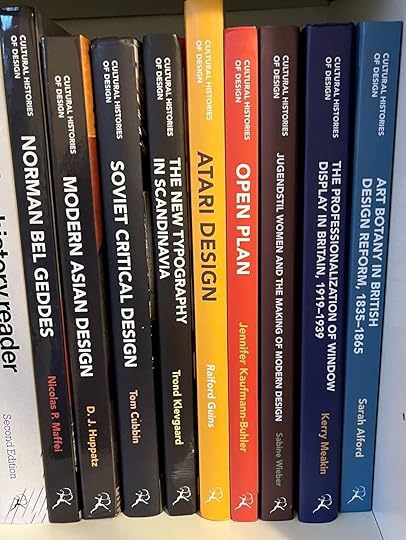
Bloomsbury was an obvious home for this series, not only because it has developed the dominant design list internationally, but also because it has grown its academic coverage in the arts and humanities through acquisitions, for instance, of Berg, Continuum, Fairchild, AVA and I.B. Tauris. The series contract was signed in 2015, and after much work and preparation, Cultural Histories of Design launched in December 2017 with two titles published at the start of 2018: Modern Asian Design by Dr Daniel Huppatz and Norman Bel Geddes: American Design Visionary by Dr Nicolas P Maffei. Later that year, Dr Thomas Cubbin’s Design on the Soviet Critical Design: Senezh Studio and the Communist Surround joined the series.
A second pair of titles, published in 2020, comprised Dr Trond Klevgaard’s The New Typography in Scandinavia: Modernist Design and Print Culture, and Prof Raiford Guins’ Atari Design: Impressions on Coin-Operated Video Game Machines. Klevgaard’s book also extended the existing geographical range of the series of the USA, Asia and Russia, into Scandinavia, providing new knowledge and understanding of how modernism was negotiated in that region. Guins examines video games as emplaced objects, the result of combined efforts in not only game design and interaction design but also product and furniture design, interior design, retail design and even airport design.
The editorial team noted that the calls for submissions had attracted a varied range of titles, but that we needed to work harder to encourage proposals from women authors. Our efforts have been successful, with the four most recent titles being Jennifer Kaufmann-Buhler’s Open Plan: A Design History of the American Office (2021) a timely reflection on the history of proximity in the very spaces that working from home kept distant during the Covid-19 pandemic; Sabine Wieber’s Jugendstil Women and the Making of Modern Design (2023), and 2024’s pair of contributions, Kerry Meakin’s The Professionalization of Window Display in Britain, 1919-1939 and Sarah Alford’s Art Botany in British Design Reform 1835-1865.
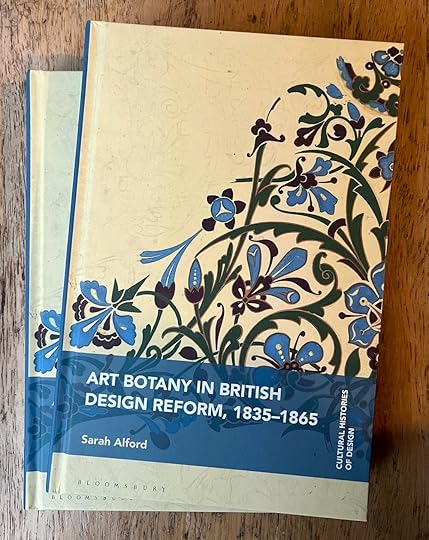
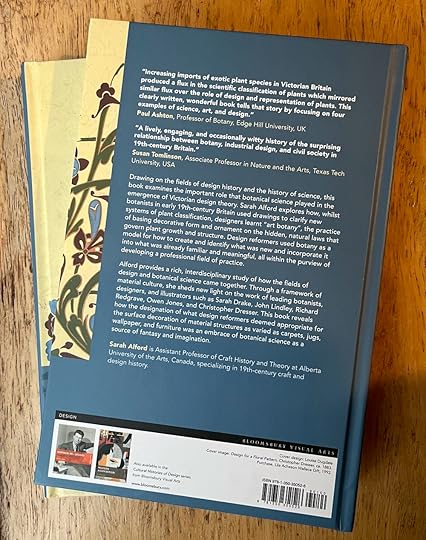
Art Botany in British Design Reform, 1835-1865
Sarah Alford’s new book meets the brief for the Cultural Histories of Design series, of engaging design history with the wider arts and humanities, by combining design history and the history of science. Alford looks anew at the history of design in the middle of the nineteenth century (specifically 1835-1865) informed by knowledge and understanding of the development of botanical science, its incorporation into contemporary design philosophies, and popular enthusiasm for botany. Alford traces the ways in which 'art botany' was promoted in new design schools as a disciplined approach to decoration informed by natural science, by leading designers such as Owen Jones and Christopher Dresser among others.
There are several forthcoming titles in the pipeline, about which more here soon. We are open to proposals which features excellent research and we are keen to encourage submissions on any topic which centres design, including for instance decolonizing design, environmental histories of design, gender studies, and histories of digital design. We are proud of the work we, and the authors and the publisher have done with the series, and we are very positive about its future.



